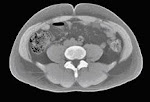Before you read this post, I recommend you read two of my earlier posts – “Fat loss: The stages involved” and “The first step: Separating fat from the fat cells”. This will put you in the right perspective and help you understand the big picture.
Fat oxidation is the technical term for burning of fat. Once fats are released into the blood as FFAs by the process of lipolysis, they are transported to the site where they can be burnt as a source of energy. These sites are called mitochondria and they are found in the muscle cells.
To get the fat into the muscle cells is a difficult and slow process. Fat moves slowly into the cell, as it must cross the cell membrane and then transported into the furnace of mitochondria. Fat is burnt in the mitochondria, just like a piece of wood, to provide energy for the muscle. The substance that helps in carrying the fat into the furnace is called Carnitine.
The rate of fat oxidation depends on the rate of lipolysis. When there is an abundance of fat being released into the bloodstream, a correspondingly higher amount of fat can be taken up for burning. However, when lipolysis is hindered due to factors such as the presence of high levels of insulin in the body etc., fat available for oxidation also becomes less.
In simple terms, larger amount of fat can be burnt about three hours after a meal, and through low-intensity exercises such as walking, for a period of at least 60 minutes. The 60 minutes mark is on the higher side, but remember that lipolysis is not only difficult but also slow. The rate of lipolysis and oxidation would vary from individual to individual and for some even 45 minutes would suffice. Besides, any form of burning requires oxygen and aerobic exercises enhance oxygen availability, apart from improving cardiovascular fitness.
Subscribe to:
Post Comments (Atom)


No comments:
Post a Comment